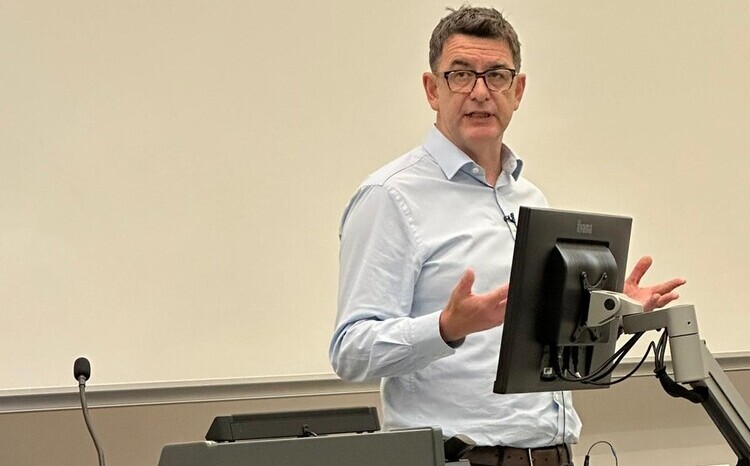Come together
- 6 July 2006
 Colin Jervis
Colin Jervis
Director of Healthcare Consulting
Kinetic Consulting Ltd
Greater mobility and the need to access a variety of digital media are driving the development of multifunctional devices that combine data, voice and video. Instead of buying new devices, consumers are increasingly finding their existing devices serving more than one purpose.
There are games consoles that offer internet access and CD and DVD drives, and mobile phones that pack cameras, MP3 players and even camcorders. But when it comes to healthcare, this kind of convergence could underpin much wider changes.
Some consumer devices are being used in surprising ways – the iPod, for instance, has been embraced by some healthcare professionals. Dr. Michael Barrett of Temple University in Philadelphia was concerned that medical students were losing skills in diagnosis with a stethoscope.
So, he recorded six abnormal heart conditions onto CD and gave it to his students. The students promptly ripped the audio and loaded it on their iPods. After about two hours the students were able to identify up to 80 percent of the sounds in a test.
But audio players are not just used for audio – they are used as storage devices and even for displaying pictures. Radiologists from the University of California, Los Angeles (UCLA), have stored complex medical images on an MP3 player. Dr. Osman Ratib and Antoine Rosset MD—a Swiss radiologist—have developed software for the Macintosh to display and manipulate complex medical images. OsiriX automatically recognises searches and lists medical images on a video iPod.
Need for mobility
Dr Nnamdi Udezue, a medical doctor who is researching the potential of PDAs in healthcare as part of a Masters degree in Technology Policy at Cambridge University’s Judge Business School, said: “Ultimately, successful technology is about benefits, not technological features – when you buy a quarter-inch drill bit, what you really want is a quarter-inch hole. iPods are successful because they are simple and fun to use.
“However, the most popular mobile device for clinicians is the PDA by far. Around 50% of all US doctors use them, though I believe the figure is less than 20% in the UK.”.
Dr Udezue says the success of US companies like Epocrates and MercuryMD demonstrates doctors’ need for mobile information. But, while in the US software supporting mobile drug reference is free, in the UK it can be prohibitively expensive.
Even something as humble as a badge can be put to use. At the push of a button on the Vocera badges, worn by staff at the Royal Belfast Hospital for Sick Children, users in a wireless environment may quickly communicate, decide and act. The lightweight badge sports a radio, speaker and microphone and uses voice activation commands—like “crash team” or “Gina”—to connect you to the right section or person. The badge works with software that integrates PBX, pager, cell phone and push to talk.
“Vocera will be a huge asset to our staff,” said Paul Duffy, IT Manager of the Royal Belfast Hospital for Sick Children, which has recently won an award for its deployment of a voice and data infrastructure. “Nurses are especially excited about this solution because they will save time tracking down staff and resources and will be able to spend more time with patients.”
The future of convergence
There are a number of limits to complex mobile devices, and the most important of these is power. Battery technology constrains reductions in device size and weight and experts predict it may be 10 years before innovations significantly improve the power to weight ratio.
Furthermore, as devices become more complex they tend to become less functional. The PC is sometimes referred to as the Swiss Army knife of the IT world—doing many things but few of them well.
John Coulthard, Director of Healthcare at Microsoft UK, thinks we should look to the future of healthcare to find the future of healthcare IT. Healthcare systems are geared to the treatment of late-stage illness. However, predictive DNA testing and burgeoning remote diagnostic and monitoring devices may underpin a decisive shift to prophylaxis.
He sees such devices increasing in number and communicating wirelessly with a central hub using internationally recognized standards: “Computers will be used for garnering information using different devices—perhaps using Bluetooth. Computers are good at collecting and presenting information so that we can understand it.”
He adds that healthcare companies tend to cater for one billion people in the developed world, but not for five billion living in the developing world. There, simple diagnostic devices should increasingly allow scarce healthcare resources to be more efficiently deployed: “We should look beyond late-stage healthcare provision,” Mr. Coulthard suggests. “We should look to the kind of systems being developed for the Third World and ask: ‘How could they be used in the UK?’”
Ironically, the futuristic scenario of being able to collect different kinds of information about patients through mobile devices could result in a return to very early medical practices. Doctors in ancient China were paid only as long as their patients were healthy. As soon as a patient fell ill, payment stopped. Could the convergence of IT, healthcare and genetics be taking us back to a similar model?
Colin Jervis has 20 years experience of healthcare as a supplier and consumer and has led three NHS Electronic Patient Record Programmes. He writes a popular healthcare technology blog, Future Health IT.
Links
Future Health IT (Colin Jervis’ blog)
Kinetic Consulting




